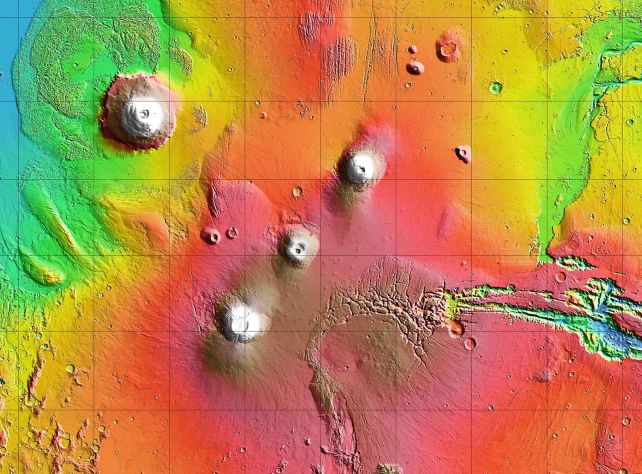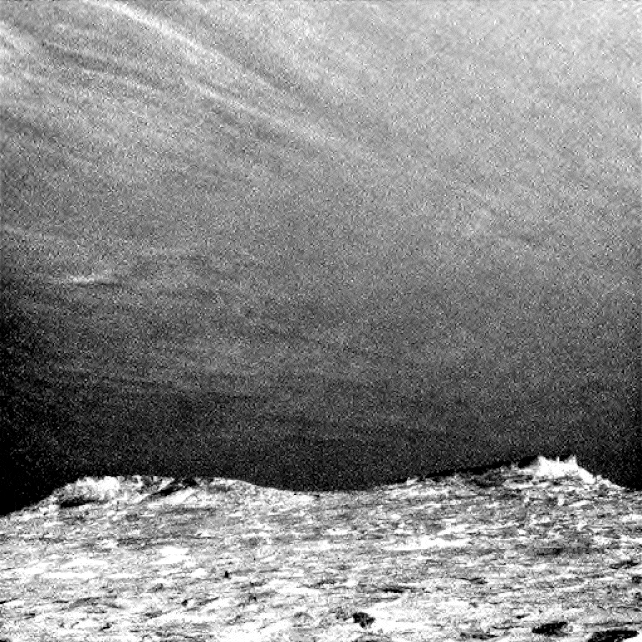A spacecraft’s-eye view over the landscapes of Mars has simply given us a first-of-its-kind glimpse of the enormous, historic edifice referred to as Arsia Mons.
The NASA satellite tv for pc Odyssey captured the large equatorial volcano as its tip peeked above the morning clouds of water ice – a typical characteristic at the moment of the Martian yr, when the pink planet is at its furthest level from the Solar on its barely elliptical orbit.

Arsia Mons belongs to a volcanic advanced referred to as the Tharsis Montes; three defend volcanoes very shut collectively within the Tharsis area of Mars. Arsia Mons is the tallest of the three, standing at a towering peak of almost 20 kilometers (12 miles).
That is dramatically increased than any mountain on Earth, the place the tallest peak above sea stage (Mount Everest) stands 8.85 kilometers excessive and the tallest mountain, Mauna Kea, rises 9 kilometers above the ocean flooring. It additionally has round 30 instances extra quantity than Earth’s largest volcano, Mauna Loa – and it is not even the largest volcano on Mars.

Its exercise is believed to have lasted billions of years, peaking round 150 million years in the past.
Odyssey normally has its cameras pointed down towards the floor of Mars. To acquire the brand new panorama, it needed to rotate 90 levels in order that its digital camera pointed on the horizon. This angle is well worth the effort: it permits scientists to make out layers and clouds within the skinny Martian sky to raised perceive its atmospheric dynamics and processes.

Clouds type round Arsia Mons when increasing air rises up the slopes of the mountain, quickly cooling, permitting ice crystals to type. At Mars’s present place in its journey across the Solar, a belt of clouds varieties across the equator referred to as the aphelion cloud belt.
Curiosity captured this phenomenon from the floor a number of years in the past; the brand new Odyssey panorama provides us a spectacular view from above.
“We picked Arsia Mons hoping we might see the summit poke above the early morning clouds,” says aerospace engineer Jonathon Hill of Arizona State College. “And it did not disappoint.”


